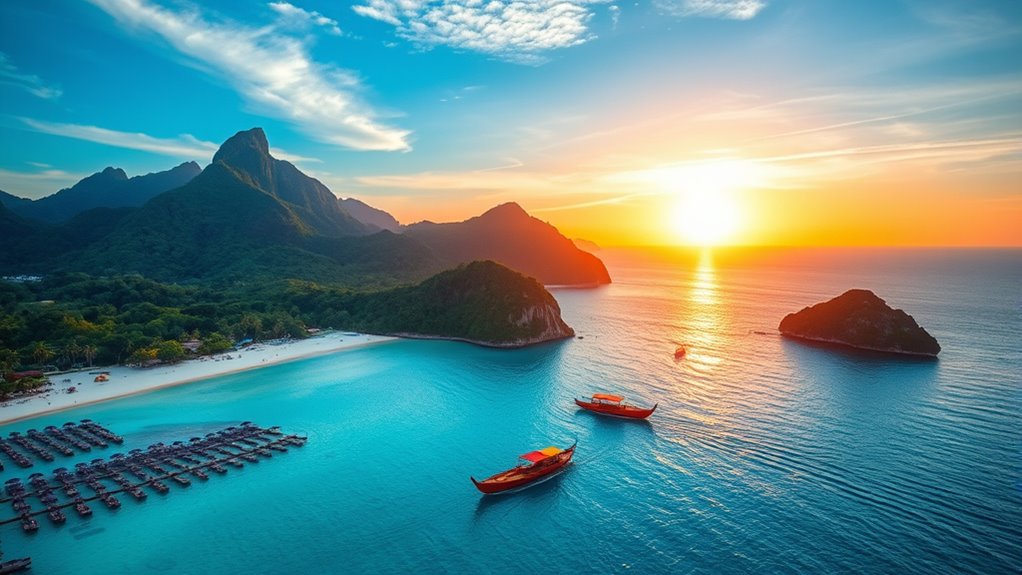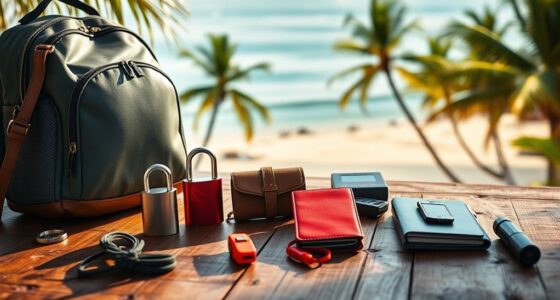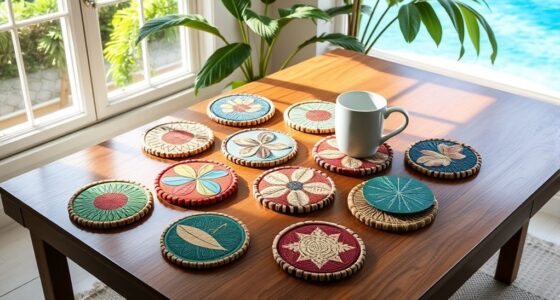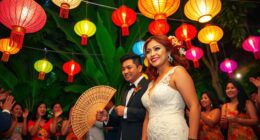When I traveled to the Philippines, I quickly realized how essential a good travel guide is. “Philippines – Culture Smart!” opened my eyes to local customs, while the “Palawan Travel Guide 2025” helped me plan my adventures. The “Tagalog Picture Dictionary Coloring Book” made learning some key phrases fun. Each guide offers unique insights, so you’ll feel well-prepared. Stick with me, and we’ll explore even more fantastic resources for your ultimate adventure!
Key Takeaways
- Explore cultural insights and practical tips in “Philippines – Culture Smart!” for a deeper understanding of Filipino traditions and customs.
- Enhance vocabulary with the “Tagalog Picture Dictionary Coloring Book,” suitable for all ages and effective for basic conversational skills.
- Discover stunning landscapes and outdoor activities in Palawan, while being mindful of accessibility issues and seasonal weather impacts.
- Utilize the waterproof and tear-resistant National Geographic Adventure Map for reliable navigation during outdoor excursions across diverse landscapes.
- Seek guides with authentic insights from authors with firsthand experiences in the Philippines for practical advice and deeper cultural appreciation.
Philippines – Culture Smart!: The Essential Guide to Customs & Culture
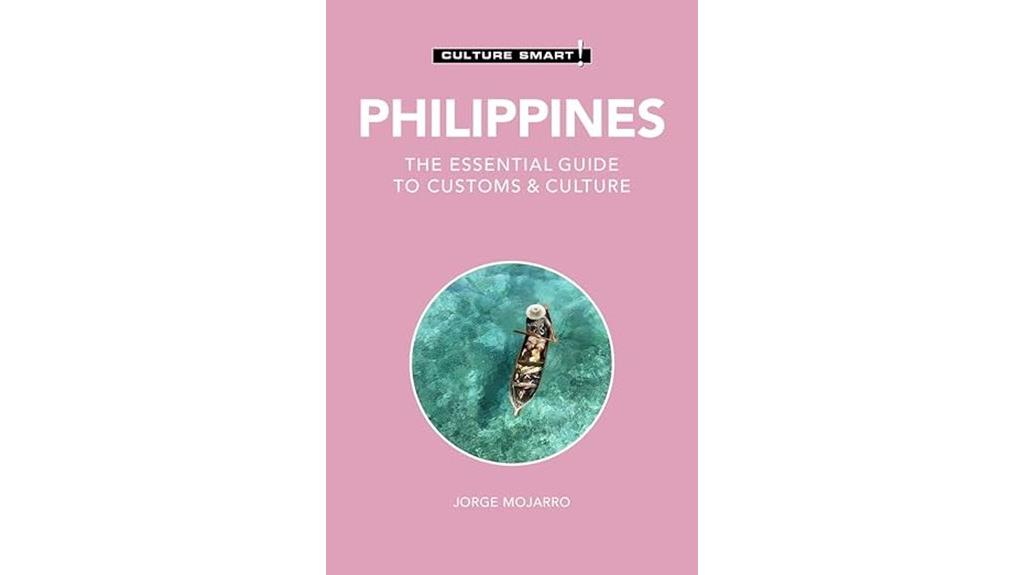
If you’re planning a trip to the Philippines or want to connect more deeply with Filipino culture, “Philippines – Culture Smart!: The Essential Guide to Customs & Culture” is the perfect choice for you. This book opened my eyes to the richness of Filipino traditions and customs. Even as a seasoned traveler, I found its insights invaluable, helping me navigate social interactions and communicate more effectively. It highlights both the similarities and differences between Filipino and Western lifestyles, making it easy to appreciate the culture. I highly recommend it for anyone enthusiastic to immerse themselves in the vibrant Filipino way of life.
Best For: Travelers to the Philippines and individuals looking to deepen their understanding of Filipino culture and customs.
Pros:
- Engaging writing style that makes learning about culture enjoyable.
- Offers valuable insights into Filipino traditions and social interactions.
- Provides practical tips for effective communication in Filipino contexts.
Cons:
- Primarily focuses on Tagalog vocabulary, which may not cover all regional languages.
- Some readers may find the content basic if they already have extensive knowledge of Filipino culture.
- Limited focus on contemporary issues or challenges faced by the Filipino community today.
Palawan Travel Guide 2025, Philippines
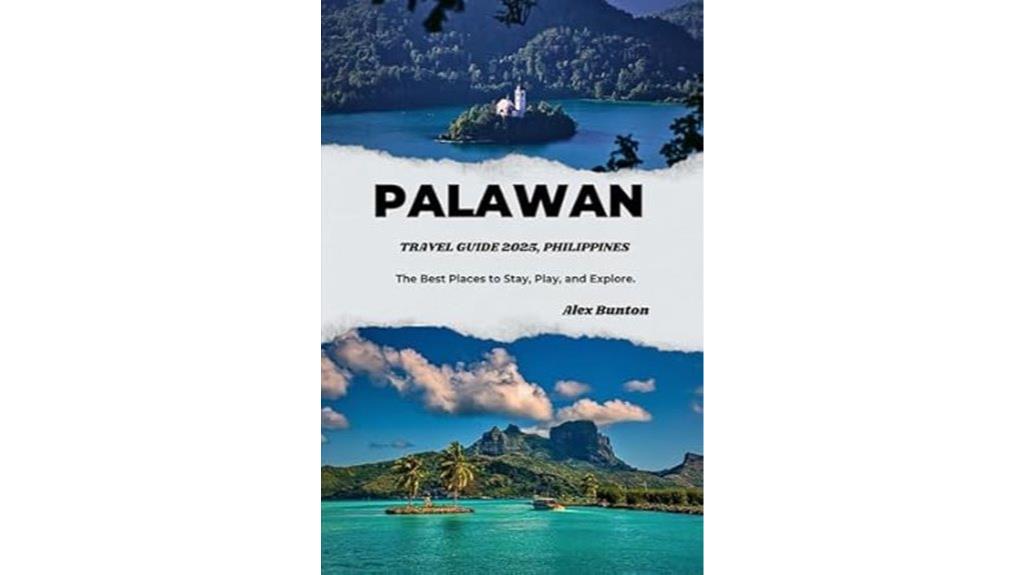
Palawan is a must-visit for anyone seeking a serene escape into nature’s wonders. I’ve explored its private beaches and hiked stunning waterfalls, and I can’t recommend it enough. If you love adventure, diving in vibrant coral reefs or rock climbing will thrill you. Don’t miss out on the local cuisine; it’s a culinary journey that enhances your experience. When planning your stay, the guide offers great insights into accommodation options, catering to various budgets. Trust me, this guide is essential for making the most of your unforgettable trip to Palawan in 2025. Your adventure awaits!
Best For: Travelers seeking a serene escape into nature, adventure enthusiasts, and food lovers looking to explore local cuisine in a stunning setting.
Pros:
- Diverse Activities: Offers a range of outdoor adventures including diving, rock climbing, and hiking.
- Natural Beauty: Features breathtaking landscapes with private beaches and stunning waterfalls.
- Great Culinary Experiences: Showcases delicious local cuisine that enhances the overall travel experience.
Cons:
- Accessibility Issues: Some remote areas may be difficult to reach, requiring additional travel time.
- Weather Dependency: Activities may be affected by seasonal weather patterns, particularly during the rainy season.
- Potentially Higher Costs: Accommodation and activities in popular areas can be more expensive compared to other destinations.
Philippines – Culture Smart!: The Essential Guide to Customs & Culture
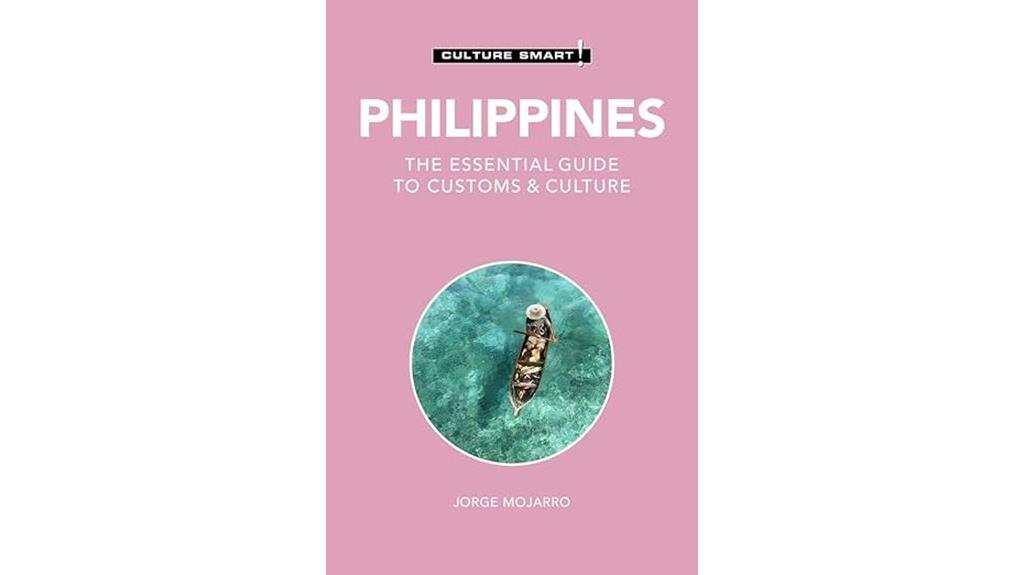
For travelers enthusiastic to truly connect with the rich tapestry of Filipino culture, “Philippines – Culture Smart!: The Essential Guide to Customs & Culture” is an invaluable resource. This guide helped me navigate the complexities of Filipino customs, making my interactions more meaningful. Even after visiting over 70 countries, I found new insights that deepened my appreciation for Filipino traditions. The focus on Tagalog vocabulary and social interactions equipped me with practical communication tips. Its engaging style and enlightening content make it a must-read for anyone wanting to immerse themselves in the vibrant life of the Philippines. You won’t regret picking it up!
Best For: Travelers and individuals seeking to understand and connect with Filipino culture and customs.
Pros:
- Engaging and educational content that provides valuable insights into Filipino traditions and lifestyle.
- Practical communication tips focusing on Tagalog vocabulary and social interactions, enhancing effective communication.
- Suitable for both first-time visitors and those with prior experience, offering new perspectives on Filipino culture.
Cons:
- Limited focus on languages other than Tagalog may not cater to those interested in regional dialects.
- Some readers may find the cultural insights less applicable if they are not planning to visit the Philippines.
- The book may not cover every aspect of Filipino culture, leaving out certain nuances that some readers might expect.
Fly Me To The Philippines: A Modern Man’s Guide

“Fly Me to the Philippines: A Modern Man’s Guide” stands out as the ideal resource for Western men exploring romance and relocation in the Philippines. Authored by Rob and Chrissy Weinstein, it combines practical advice on visas, finances, and local customs with personal anecdotes that make the journey relatable. I found their insights on age-gap relationships particularly valuable, emphasizing the importance of meaningful connections. The book tackles emotional challenges too, guiding readers through cultural adjustments. Whether you’re a first-time traveler or considering a move, this guide offers an extensive and engaging approach to embracing life in the Philippines.
Best For: Western men seeking guidance on romance, relocation, and cultural adaptation in the Philippines.
Pros:
- Comprehensive coverage of practical aspects like visas, finances, and local customs.
- Personal anecdotes that provide relatable insights into the Filipino way of life.
- Valuable relationship advice focused on establishing meaningful connections, especially for age-gap relationships.
Cons:
- May not address all individual circumstances or specific challenges faced by readers.
- Focuses primarily on the perspective of Western men, which might not resonate with all audiences.
- Some readers may prefer a more structured format rather than a narrative style.
Tagalog Picture Dictionary Coloring Book

If you’re looking to enhance your Tagalog skills while preparing for a trip to the Philippines, the Tagalog Picture Dictionary Coloring Book is a fantastic choice. It’s a fun and engaging way to learn over 1500 words and phrases, making vocabulary building enjoyable. I find that coloring while discussing the pictures with a friend really boosts my understanding. This book’s approach is perfect for all ages, whether you’re a traveler or a retiree wanting to improve your conversational skills. Plus, it’s a great supplement to formal courses, helping me stay motivated and excited about learning Tagalog.
Best For: The Tagalog Picture Dictionary Coloring Book is best for travelers, retirees, and visual learners who want to enhance their Tagalog conversational skills in an engaging way.
Pros:
- Engaging and enjoyable learning experience through coloring and vocabulary building.
- Comprehensive vocabulary with over 1500 Tagalog words and phrases.
- Suitable for learners of all ages and a great supplement to formal language courses.
Cons:
- Requires interaction with others to maximize understanding and retention.
- May not be as effective for advanced learners looking for in-depth language study.
- Limited to basic conversational skills, which may not cover complex grammar or syntax.
Philippines Map (National Geographic Adventure Map, 3022)

The National Geographic Adventure Map (3022) is an essential tool for adventurous travelers keen to explore the diverse landscapes of the Philippines. I love its waterproof and tear-resistant quality, making it perfect for outdoor excursions. The detailed layout, with the north on one side and the south on the other, is incredibly useful for planning my trips. It’s been durable over the years, and I appreciate how locals can point out their hometowns on it. With frequent rain in the Philippines, this map truly keeps up, sliding off water effortlessly and exceeding my expectations for navigation and adventure.
Best For: Adventurous travelers looking for a durable and reliable map to explore the diverse landscapes of the Philippines.
Pros:
- Waterproof and tear-resistant, ideal for outdoor use in wet conditions.
- High-quality printing with detailed layouts that enhance trip planning.
- Durable design that withstands regular use without creasing or tearing.
Cons:
- Some users report issues with cheap paper that may tear easily.
- Requires two maps for full coverage of the entire Philippines.
- May feel “old school” for those accustomed to digital navigation tools.

For adventurous travelers craving more than just sun-soaked beaches, “Philippines Beyond the Beaches: A Traveler’s Guide to Hidden Wonders” might seem like an enticing option. Unfortunately, I found it disappointing. The guidebook uses colorful language but lacks depth and insight, leaving me wanting more. It seems the author relied heavily on online sources, resulting in a superficial overview that fails to engage or inform. I expected a thorough exploration of the Philippines’ hidden gems, but instead, I encountered a lack of detail. I can’t recommend this guidebook if you’re seeking genuine insights into the country’s rich offerings.
Best For: Travelers looking for a quick, surface-level overview of popular tourist spots in the Philippines without in-depth insights.
Pros:
- Colorful Language: The guidebook features vibrant and engaging descriptions.
- Easy to Read: The writing style is accessible and straightforward for casual readers.
- Compact Format: It provides a quick reference for those seeking basic information.
Cons:
- Lacks Depth: The content does not provide thorough insights or detailed information about destinations.
- Superficial Research: The reliance on online sources leads to a lack of original research and authenticity.
- Fails to Engage: The guidebook does not capture the true essence of the Philippines’ hidden wonders, leaving readers unsatisfied.
The 50 Best Dives in the Philippines: The Ultimate Guide

Diving enthusiasts seeking an unforgettable underwater adventure will find “The 50 Best Dives in the Philippines” an intriguing companion. This guide showcases incredible dive sites filled with vibrant sea life and stunning underwater photos. However, I must admit, it falls short in providing essential details like maps and technical dive information. While the visuals are enchanting, they overshadow the practical insights I craved. Additionally, the production quality feels subpar for its price of 35 euros. If you’re after an all-encompassing dive guide, you might want to look elsewhere, but the stunning imagery could still inspire your next dive trip!
Best For: Divers seeking visual inspiration rather than detailed diving information about the Philippines’ top dive sites.
Pros:
- Stunning underwater photography that showcases vibrant marine life.
- Highlights popular dive sites in the Philippines for potential trip planning.
- Can serve as a coffee table book for diving enthusiasts.
Cons:
- Lacks critical details such as maps and technical dive information.
- Production quality is below expectations for the price point of 35 euros.
- Minimal tourist information makes it less practical as a comprehensive dive guide.
Philippines Retirement: A Complete Beginners Guide to Expatriate Living
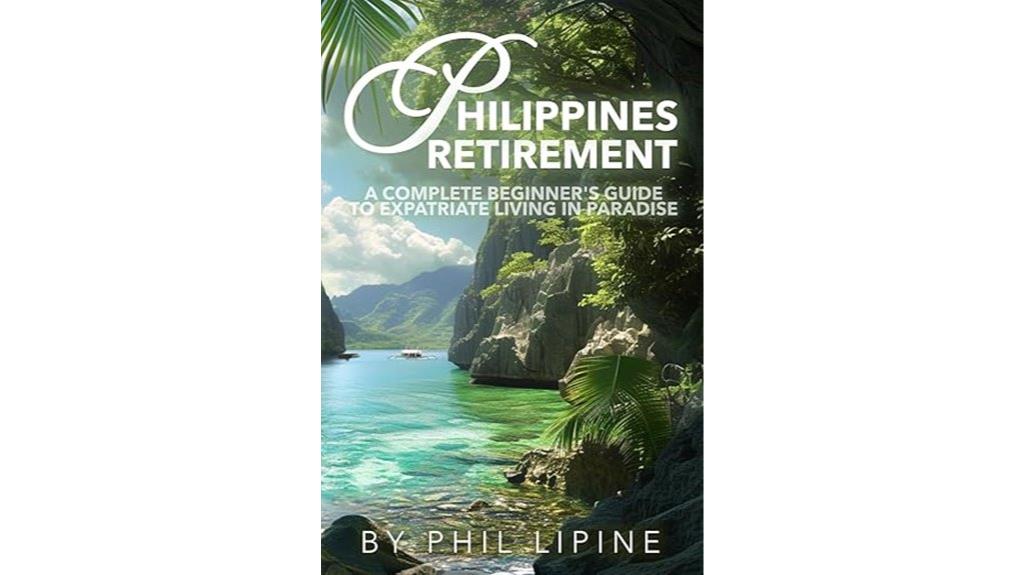
Considering a move to the Philippines for retirement? This guide is your go-to resource. It covers everything from visas and finances to property and culture, making sure you understand what expatriate life entails. I found the insights on affordability particularly helpful, especially when weighing retirement destinations. Plus, there’s practical advice for integrating into the expat community, including a handy intro to Tagalog. Beautiful photos showcase the stunning landscapes, drawing you in even more. While some formatting issues exist, the content remains invaluable. If you’re contemplating property investment, it highlights essential local regulations. You’ll feel prepared for your new adventure!
Best For: Those considering retirement in the Philippines who seek comprehensive information on expatriate living, including practical advice and cultural insights.
Pros:
- Offers a thorough overview of visas, finances, property, and cultural integration for potential retirees.
- Provides practical advice for expat life, including an introductory section on Tagalog for better communication.
- Features beautiful photos that enhance engagement and showcase the Philippines’ landscapes and culture.
Cons:
- Some readers have noted formatting issues and spelling mistakes that can detract from the reading experience.
- A few critiques mention that certain advice could benefit from more in-depth exploration.
- The simplicity of some content may not meet the expectations of readers seeking advanced insights.
Factors to Consider When Choosing Travel Guides for the Philippines

When I’m selecting travel guides for the Philippines, I focus on a few key factors. I want to make sure the content is accurate and offers practical tips while also giving me cultural insights. Additionally, the guide’s visual appeal and the author’s expertise can really enhance my travel experience.
Content Depth and Accuracy
To truly appreciate the Philippines, I believe it’s vital to choose travel guides that offer both depth and accuracy in their content. A well-rounded guide should explore Filipino traditions and customs, providing valuable cultural insights. I’ve noticed that guides relying heavily on online sources often lack authenticity, leading to a superficial understanding. It’s essential to find guides that include practical information, like local customs and language basics, to help navigate social interactions. Extensive coverage of logistics, such as transportation, accommodation, and local cuisine, prepares you for your adventure. High-quality visuals and engaging narratives can further enhance your learning experience, making complex cultural topics easier to digest and enjoy. Choosing wisely will enrich your journey in the Philippines.
Practical Travel Tips
A solid travel guide can make all the difference in your experience exploring the Philippines. When picking one, I always look for guides that delve into practical travel planning advice. It’s essential to have information on accommodation options, transportation tips, and safety precautions tailored to the region I’m visiting. I prefer guides that showcase a variety of activities, from diving to culinary experiences, ensuring my trip is well-rounded. Language support is also key; having common phrases handy helps me communicate with locals and navigate social interactions. Finally, I consider the guide’s quality. Waterproof and tear-resistant guides are a must, especially if I plan to explore the great outdoors. This way, I’m always prepared for whatever adventure awaits!
Cultural Insights Provided
Cultural insights in travel guides can truly enhance your journey through the Philippines, allowing you to connect more deeply with the locals and their way of life. I’ve found that guides that explore Filipino traditions and customs make steering through social interactions much easier. When they highlight similarities and differences between Filipino and Western lifestyles, I gain practical tips for effective communication, which really improves my experience. Knowing some Tagalog basics also helps me engage better, enriching my immersion in the culture. Guides that share emotional and cultural insights deepen my appreciation for Filipino life, fostering a respectful and meaningful experience. Plus, practical advice on respecting local values empowers me to engage positively with the vibrant Filipino community.
Visual Appeal and Design
When choosing travel guides for the Philippines, I always look for visual appeal and design, as these elements can greatly enhance my experience. Beautiful photos showcasing the stunning landscapes and vibrant culture draw me in and make reading more enjoyable. I appreciate well-designed guides with clear layouts and organized sections; it helps me quickly find the information I need. High-quality printing and durable materials, like waterproof pages, are essential for outdoor use. I also love colorful maps and diagrams that provide valuable context, helping me understand geographical locations and plan my itineraries. A visually appealing design that integrates images with informative text creates a more immersive experience, allowing me to connect with the destination on a deeper level.
Author’s Expertise and Perspective
Choosing the right travel guide for the Philippines goes beyond just its visual appeal; it’s about the author’s expertise and perspective as well. I always look for authors who’ve lived in the country, as their firsthand experiences offer invaluable insights. Those who’ve successfully navigated local customs can help me understand the nuances of Filipino life. Guides featuring contributions from locals often reveal authentic cultural gems that mainstream guides miss. I also consider the authors’ backgrounds in travel writing or cultural studies, as this expertise enriches the information. Personal anecdotes enhance the narrative, providing practical advice based on real-life experiences. Ultimately, a guide that combines these elements makes my adventure in the Philippines truly unforgettable.
Language and Communication Aids
One essential factor to contemplate in travel guides for the Philippines is the inclusion of language and communication aids. Understanding Tagalog can truly enhance my interactions with locals, making my travel experience richer. Guides that offer Tagalog vocabulary and basic phrases help me build rapport and navigate social situations with ease. I’ve found that resources emphasizing Filipino social interactions reveal cultural nuances, ensuring smoother and more respectful communication. Visual aids, like picture dictionaries, cater to my creative side and make language acquisition enjoyable. By familiarizing myself with local expressions and customs highlighted in these guides, I can avoid misunderstandings and show genuine respect for Filipino culture. It’s all about connecting with the heart of the Philippines!
Frequently Asked Questions
What Is the Best Time to Visit the Philippines?
The best time to visit the Philippines is typically from November to April. During these months, the weather’s dry and pleasant, perfect for exploring the beaches and islands. I’ve found that January and February are especially enjoyable, as the temperatures are mild and the crowds are manageable. While I love visiting during the dry season, keep in mind that every time of year has its unique charm and experiences waiting for you.
Do I Need a Visa to Travel to the Philippines?
Traveling to the Philippines feels like stepping into a vibrant painting, full of color and life. Now, about the visa situation—it’s pretty straightforward. If you’re from certain countries, you won’t need a visa for stays under 30 days. However, it’s best to double-check your specific requirements before booking your flight. I always make sure to stay informed, so my trips go as smoothly as possible. Happy travels!
What Are the Local Transportation Options in the Philippines?
When I traveled to the Philippines, I found several local transportation options that made getting around a breeze. Jeepneys are a fun, colorful way to experience the culture while sharing rides with locals. Tricycles are great for short distances, and I often used them to navigate narrow streets. Buses and ferries connect the islands, too. For convenience, I also downloaded ride-hailing apps, which made exploring the cities even easier.
Are There Any Health Precautions for Traveling in the Philippines?
Did you know that around 20% of travelers to the Philippines face some health issues during their trip? To stay safe, I recommend getting vaccinations for hepatitis A and typhoid. It’s also a good idea to drink bottled water, as tap water can be unsafe. I always pack a basic first aid kit and insect repellent to prevent mosquito-borne diseases. Staying informed and prepared can make all the difference in enjoying your adventure!
What Are the Must-Try Foods in the Philippines?
When I traveled to the Philippines, I discovered so many must-try foods! I couldn’t resist the adobo, a savory dish that’s simply delicious. The lumpia, or spring rolls, were crispy and packed with flavor. I also loved the sinigang, a tangy soup that warms the soul. Don’t forget to try the famous lechon, a roasted pig that’s a party favorite. Each bite took me deeper into the rich Filipino culture!
Conclusion
As you commence your adventure in the Philippines, having the right travel guide can make all the difference. Imagine flipping through the pages of “Philippines Beyond the Beaches” as you discover a hidden waterfall, the sound of rushing water echoing in your ears. Each guide presents unique insights that enrich your experience, whether you’re diving into vibrant marine life or exploring lively markets. So grab your guide and get ready to create unforgettable memories in this stunning archipelago!
